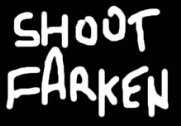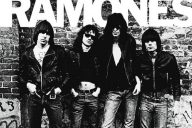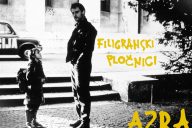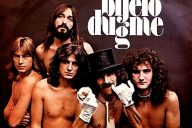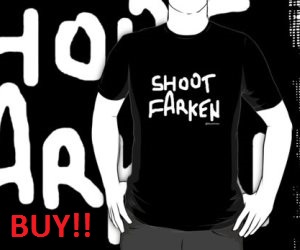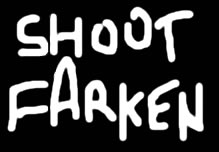The Hateful Eight, the eighth film by Quentin Tarantino has divided critics and movie goers alike. Here at Shoot Farken we have decided to put Tarantino on trial. We invited two of the smartest film commentators in Australia, who had very different reactions towards the The Hateful Eight, to present the case for and against the film.
Presenting the case “against” is Anders Furze, a Melbourne-based writer on film, TV and popular culture. He both works and is a grad student at the University of Melbourne’s Centre for Advancing Journalism. You can read his work for The Citizen here and find him on Twitter @AndersFurze.
Presenting the case “for” is Chris Elena, a filmmaker and former film reviewer from Sydney. He is currently working as a freelance script editor for independently funded short films and features, and putting the finishing touches to a feature film shot in in both 8mm and 16mm. You can find him on Twitter @Christoph_Elena.
THE CASE AGAINST THE HATEFUL EIGHT
If nothing else, and there really is not much else, The Hateful Eight managed to fill an entire picture house at 9.30PM on a Tuesday evening with an audience paying $25 to watch a western. We sat in our seats holding specially produced programs and listening to the theme of Sergio Leone’s Once Upon A Time In The West playing louder and louder. This alone is worth mentioning, and celebrating.
As for the film.
Things start promisingly enough. Tarantino’s incredibly considered pan out and around a grave marker is, yes, even sort of thrilling. He has a knack for using the tools movies provide to turn the mundane into the novel and so it is here. A very slow zoom away from a grave marker might sound vaguely painful but when combined with that Morricone score, the novelty of 70mm and the fact that the vast, vast majority of what is to come takes place entirely indoors, it’s actually the most exciting thing in the whole movie.
The problem with the rest of The Hateful Eight can really be boiled down to one thing: Tarantino is just not as clever as he thinks he is.
Somewhere in the dreary middle of the picture, Oswaldo Mowbray (Tim Roth) the “hangman of Red Rock” delivers a monologue about justice. Oswaldo goes on at length about how he is the end of a process, which means that when he kills people he is delivering justice, and therefore what he does is defensible, but when anybody else kills people it’s not the end of a process so it is indefensible, etc etc.
It is an extremely long monologue in an extremely long film and the whole point of it is to tell us something extremely mundane. Hangman = justice. Vigilante = not justice. Is that really an interesting point to make? And even if it were, does it justify an entire monologue?
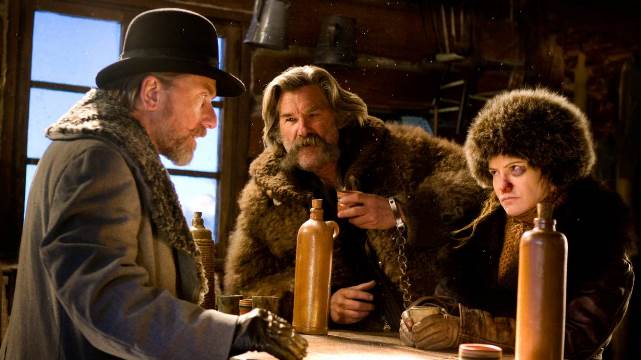
We’ve got a problem. Anders Furze hated my interminable monologue.
Christ do they talk in this movie. And that would be fine, if the dialogue was good, or at least bad but interesting. Unfortunately, Tarantino’s is mostly neither. And when it’s 11.55PM and you’ve been stuck in Minnie’s goddamned Haberdashery for over two and a half hours you begin to tune it out.
Immediately after the third time the character’s struggle to close the front door, from the blizzard outside, the claustrophobia set in. Lord did I feel cooped up in that Haberdashery, with only monologue-sprouting caricatures for company. I longed for cabin fever but was rewarded with mostly tedium instead.
For a movie set almost entirely in there, Tarantino really doesn’t seem to give a damn about the Haberdashery, at least not in the way he gives a damn about that Yakuza bar in Kill Bill, or the house at the start of Inglorious Basterds.
In both those films his camera possesses a curiosity that is entirely absent here.
Instead, he explores Minnie’s Haberdashery mainly through dialogue (that odd, never returned-to monologue (what else?) which equated different zones of the room with different regions of America), and in flashback.
That flashback. Depending on your charity he either lazily or ingeniously self-plagiarises the opening of Inglorious Basterds. More infuriatingly, the flashback also ruins Minnie. The Minnie, of Minnie’s Haberdashery, hitherto known to us only through Major Warren’s almost reverential discussion of her, but in this flashback resurrected solely for the purpose of promptly being destroyed.
To say that what happens to Minnie in this flashback is gratuitous is an admittedly useless criticism to lob at Tarantino. But the scale of its gratuity is such that he manages to propel the flashback against the rest of the movie, with mostly ruinous results.
What happens in that flashback, the narrative holes it violently plugs for seemingly no other reason but shock value, shows a filmmaker who seems to have lost the plot, and in the most tedious of fashions.
So there’s more blood, and more of Minnie’s Haberdashery, and superficial allusions to race and America, and it’s ridiculous but not so ridiculous, ill-advised but not so ill-advised, dumb but not so dumb, that it just ends up being boring.
At least we got to keep the programs.
THE CASE FOR THE HATEFUL EIGHT
Why do I love a Quentin Tarantino film about a mean spirited murder mystery set in one room filled with violent racist, mysogynist neanderthals which he himself narrates? Because it’s intentionally miserable, unpleasant, depressing and judgmental of its own audience. Because each time the N word is used or every instance Jennifer Jason Leigh is treated like shit, we’re reminded of what the film’s doing with its intended misery, it’s using characters to address a mentality that has been built by modern media/cinema and catered to throughout history, including now: The entitled straight white man.
Tarantino’s films have addressed for quite some time now, the evil that comes from white male privilege: Kill Bill, Jackie Brown, Death Proof, Django Unchained, Pulp Fiction. Through casual racism, through elaborate acts of violence and even through misogyny, they’re all acted out by entitled white men with power in some way (which then leads to a plot consisting of revenge and endless violence). Tarantino continually, in interviews denies any intentional social commentary in his films, but with The Hateful Eight I had to apply my ultimate philosophy with films. If a filmmaker makes a film, no matter their intentions, it’s ours to make of it and call it what we will.
The Hateful Eight is the ultimate example of his fascination and disdain for white male privilege as well as the greatest time to not listen to a director deny social commentary or their intentions with their work.
What I loved about The Hateful Eight is how it addressed such a stereotype (the privileged white guy), through the characters in the film who were innocent of murder and sabotage but refused to address their own prejudices. They believe themselves to be the most progressive of everyone in America and in this room (especially Kurt Russell’s John Ruth who exercises political correctness when it comes to specific racial slurs but is absolutely OK with casual misogyny and ultimately reverts back to being racist along with everyone else.)
Major Marquis Warren (Samuel L. Jackson) may be the ultimate exception and is aware of what he’s done and who he is, but he’s still an actively hateful person, who’s almost proud of such a status going by the scene right before that very necessary intermission.
The guilty ones, the culprits of the Agatha Christie like narrative are the most comfortable and aware of their awful, mean and evil nature, especially Daisy Domergue (Jennifer Jason Leigh), she is the only one who knows she is an awful person and doesn’t hide it for a second, yet she suffers the most. Because, she is everything these men do not want to think of themselves as and refuse to. She is evil and racist yet they are all progressive.
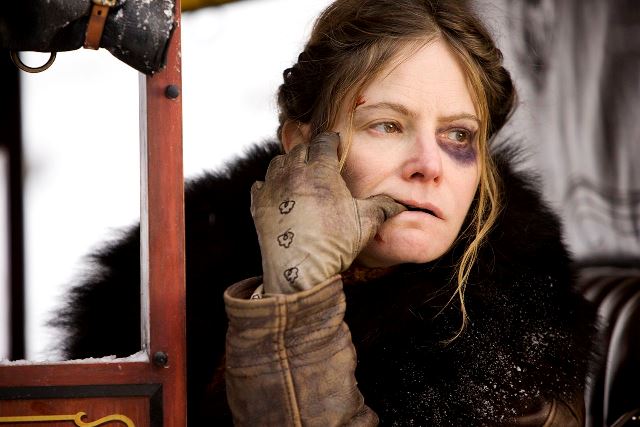
At least Chris Elena understands why I’m here.
The Hateful Eight is full of contradictions, it’s full of nasty, disgusting behaviour, but not for a minute did I think the film was inviting me to celebrate any of it. I felt gross, I felt characters being dehumanized being called the N word, I felt Leigh’s character being treated the same throughout the film, especially at the very end.
Racism and especially sexism are evident in just about every film we see today, we look at those classics of cinema we love and worship and they have just about as much, if not more of each and it’s never addressed but almost always casual amidst a great story. The Hateful Eight addresses it.
The Hateful Eight reminded me of how common both aspects were in most films released in Hollywood. Yet, this time that I felt sick to my stomach at a group of men still thinking they have a moral high ground because they detest one and refuse to acknowledge the other. It made me hate the films I give passes to all the more and that is an achievement indeed.
However, any one who wants to criticize this film for the amount of times Jennifer Jason Leigh is beaten in the film or the one scene that uses the N word flippantly, I promise, I won’t argue back. You will be right.
